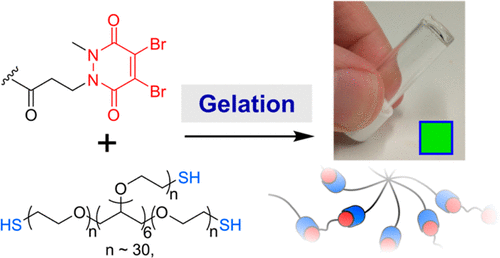PROJECT OVERVIEW
Here we develop new methods for hydrogel cross-linking and dissolution to produce dynamic gels to support human cell culture.
PROJECT DETAILS
- Research Name Hydrogel Cross-Linking via Thiol-Reactive Pyridazinediones
- Journal Biomacromolecules
- Year 2023
- Link https://pubs.acs.org/doi/full/10.1021/acs.biomac.3c00290

Abstract
Thiol-reactive Michael acceptors are commonly used for the formation of chemically cross-linked hydrogels. In this paper, we address the drawbacks of many Michael acceptors by introducing pyridazinediones as new cross-linking agents. Through the use of pyridazinediones and their mono- or dibrominated analogues, we show that the mechanical strength, swelling ratio, and rate of gelation can all be controlled in a pH-sensitive manner. Moreover, we demonstrate that the degradation of pyridazinedione-gels can be induced by the addition of thiols, thus providing a route to responsive or dynamic gels, and that monobromo-pyridazinedione gels are able to support the proliferation of human cells. We anticipate that our results will provide a valuable and complementary addition to the existing toolkit of cross-linking agents, allowing researchers to tune and rationally design the properties of biomedical hydrogels.
Authors:
Calise Bahou, Richard J. Spears, Angela M. Ramírez Rosales, Léa N. C. Rochet, Lydia J. Barber, Ksenia S. Stankevich, Juliana F. Miranda, Tobias C. Butcher, Adam M. Kerrigan, Vlado K. Lazarov, William Grey, Vijay Chudasama,* and Christopher D. Spicer*